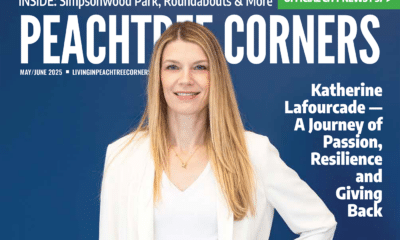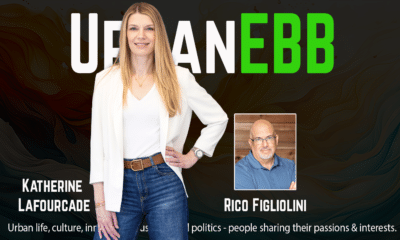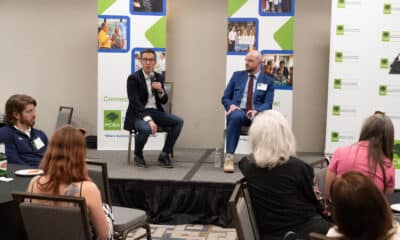Arts & Literature
Wesleyan Artist Market 2024: Meagan Brooker
Published
1 year agoon
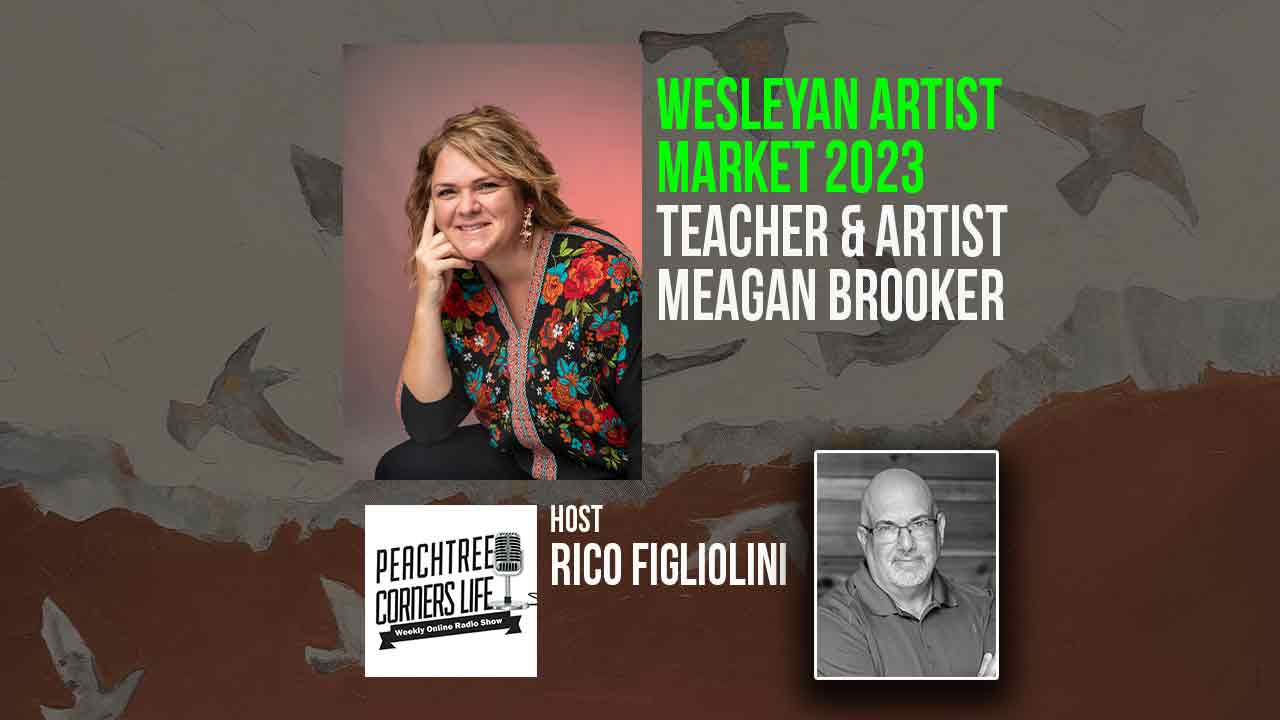
The Wesleyan Artist Market takes place in Peachtree Corners on April 26-27, 2024
Listeners are taken on a journey into the colorful art world through the eyes of high school art teacher Meagan Brooker. With 17 years of experience at Wesleyan School in Peachtree Corners, Brooker shares her passion for creativity, sharing how art has become a form of therapy and a source of inspiration in her life. From discussing her artistic process and inspiration to highlighting the importance of art for mental well-being, Brooker’s infectious enthusiasm for art will captivate and inspire listeners of all backgrounds. Brooker’s art will be displayed at the Wesleyan Artist Market 2024, April 26-27.
Tune in to discover the transformative power of creativity and art in this enlightening and uplifting Peachtree Corners Life Podcast episode.
Timestamp:
00:00:00 – Introduction of Artist Meagan Brooker
00:01:32 – Teaching Art at Wesleyan School
00:04:00 – From Science to Art: Following My Creative Passion
00:08:42 – Balancing Creativity and Exhaustion
00:10:18 – Painting as Meditation and Process
00:13:53 – Tuscany Landscapes to Inspire Artists
00:17:29 – Finding Inspiration in the Unexpected
00:20:32 – The Healing Power of Art in Challenging Times
00:23:16 – The Pros and Cons of Social Media for Artists
00:25:49 – Embracing Digital Art Tools and AI in the Creative Process
00:29:08 – Exploring AI’s Role in the Creative Process
00:31:23 – Closing
Podcast Transcript
Rico Figliolini 0:00:00
Hi, everyone. This is Rico Figliolini, host of Peachtree Corners Life. This year, this month, today we’re doing an interview with an artist that’s going to be at the Wesleyan Artist Market, Meagan Brooker. So let’s say hi to Meagan. Hey, Meagan.
Meagan Brooker 0:00:13
Hello.
Rico Figliolini 0:00:14
Thanks for being with us. Appreciate it. Thank you for being with us. Before we actually get into all of this, I just want to say thank you to our sponsor, EV Remodeling, Inc. They do a great job when it comes to remodeling, design and build, start from scratch up. Eli, him and his family live here in Peachtree Corners, does a great job. Lots of people know them. Anything from your bathrooms and kitchens to your whole house almost. So check them out at evremodelinginc.com. We appreciate the support of these podcasts. So now let’s get right into it because we’ve done this, I just did this interview a little while, a few weeks ago with two student artists that are going to be featured at Wesleyan Artist Market. Their stream is actually going to happen Wednesday. For Meagan and I to know you all that are listening won’t know which Wednesday that is, but it’s going to be on a Wednesday. Actually, before we go to press with the next issue of Peachtree Corners Life magazine, which has three profiles, including Meagan, of the Wesleyan artists, three of the artists that are going to be there. So this is a compliment to that. We’re going to be talking a bit about art and what inspires Meagan. So let’s get right into it. Meagan, why don’t you tell us a little bit about yourself and maybe how you started at Wesleyan.
Meagan Brooker 0:01:36
Yeah. So I teach at Wesleyan school. I teach high school art. I teach all levels of AP photography, and I’ve been there for 17 years, which makes me feel very old.
Rico Figliolini 0:01:51
You’re not, though. You look fine.
Meagan Brooker 0:01:54
Thank you. So I went to the University of Georgia and went after getting my degree in undergrad of art education. I taught elementary art in Gwinnett county for two years. And then I did missions work for a year, actually, and was looking for a high school job because I thought the idea of the challenge of high school would be really interesting. And, yeah, I just love my job and I love Wesleyan. And I’m very grateful to be there because obviously I’ve been there for 17 years.
Rico Figliolini 0:02:29
Yes, it’s a great school. Wesleyan school is in the city of Peachtree Corners, and they do a fantastic job and they’re growing. I mean, they’re in the middle of actually a building project right now for their STEM building. So lots going on at Wesleyan. This is just one facet of what they do. So you’ve been there 17 years and you’re teaching high school students, I believe the high school, the upper level class. Upper school, yes. In particular, what are you teaching at this point? What subject or mediums are you working in?
Meagan Brooker 0:03:01
So currently I’m teaching all levels of 2d art. So drawing, painting, mixed media, anything that’s 2d from foundations all the way up to AP, the AP level, which is kind of college credit courses. And that includes AP photography. Previously I taught photography and way back in the day I used to teach 3d as well. But I love now that I get to specialize in two d. And then we have amazing teachers who teach focus on photography and focus on 3d. So we have a great team.
Rico Figliolini 0:03:33
Excellent. Cool. Let me ask you something, because as we grow up, as we’re young and we’re getting into school and we’re in elementary and middle school, we start discovering ourselves a little bit, right? We start discovering what we like, what we don’t like and stuff. Of course, people around us, including parents, may sometimes tell us what we should like and we shouldn’t like or what we should become. I know that you inspired early on to be an artist, to go down that route. Well, maybe not to be an artist, but to go down the route of the arts versus the science. So tell us, what inspired you? At which point did you decide you wanted to be creative versus being, let’s say, a doctor or something?
Meagan Brooker 0:04:17
Yeah. Well, that’s interesting, actually. I tell all my students, like, follow your innate gut and what fulfills you and stirs you up and makes you want to do more. I, from a very young age, was always wanting to paint, create, take classes, paint my ceiling in my bedroom, even though my mom wouldn’t let me paint furniture. I was always wanting to create or create my own space or do something creative. I had a very fast working creative brain and I came from a small county up in north Georgia, and there weren’t many opportunities in the arts. So in high school I had a great art teacher who was the first one who looked at my work and said, you know, you’re really talented. And I was, you know, so I got that encouragement and that fed in, which made me want to work harder. It made me want to do more and try more and get better. So I actually went to college and started in premed because I had good grades and was smart and my family was like, you, listen, go make some money. Don’t become a teacher.
Rico Figliolini 0:05:27
Not good money there.
Meagan Brooker 0:05:30
So I started off in premed and I just was bored to tears. And it was not life giving anyway. So I decided to switch to art and have never looked back ever since then. My family sometimes wishes I might have, but they see how life giving it is for me now and how innate it is and how much I’m able to do with the creativity. So it’s come around.
Rico Figliolini 0:05:56
So you’ve never really looked back and said, maybe I should put my brushes away and do something else.
Meagan Brooker 0:06:02
No, it’s too natural. I have too much of the creative and too much to put out there to stop. I’m not really that great at anything else either. Have too much fun with it to stop now.
Rico Figliolini 0:06:18
Right? Okay. And I can appreciate that. My parents wanted me to be an accountant, hated numbers, could never do that. And just not for me. My brain didn’t work on that side for that. But teaching art, this is one of the things I learned from my youngest, right? He says to me, I asked him, I said, what do you want to be? He says, I’d love to be a writer. I want to write. I want to write novels and stuff. So he’s creative, but he doesn’t want a job, that he has to write a lot during the day, because then all his creativity is gone by the end of the day. So how do you work that? How do you balance. It’s a life balance, right? Work life. How do you balance that creativity with the work that you do all day long with other kids? How do you do that?
Meagan Brooker 0:07:05
Honestly, that is probably the toughest part of my job. And I have two young boys, so that to complicate the.
Rico Figliolini 0:07:14
How old resources.
Meagan Brooker 0:07:18
One’S twelve, he’s in fifth grade and one is eight. And they go to Wesleyan with me, which is also a huge blessing. When I started off in art education and I got into the courses and started doing the practicum teaching, I loved being able to impart the knowledge of creativity and the natural working of all of the brain work that working with your hands does in every way. And it’s not about teaching methodology to me, as much as it is like pulling out this natural creativity. And I was always fascinated with art therapy. I considered studying that, but I think art is very much a natural therapy. And there’s so many studies about how when we’re working with our hands, how our brains calm down, they can think better. They’re clearly so. Even just a 30 minutes break in the middle of the day or an hour break to work with your hands and not have to just use a different part of your brain is so good for anybody. You think about how it works with four year olds. It’s the same with 80 year olds. Being able to use my creativity during the day, it is exhausting because I feel like being asked 20 questions every five minutes. I do come home depleted, but at night, when the boys go down, when I can, I will go down and just let it all out on canvas. I will say, currently, my work is not the most conceptual. It’s more reactive, but it’s kind of more guttural and things that I. It’s emotional in a way of things that I’m reacting to in my current life. And I feel like most artists do that. It’s like where you are, your work is breathing out of where you are.
Rico Figliolini 0:09:17
I think that makes sense, right? Because inspiration is in the moment when you’re doing these things. It’s not like most artists plan these things out. Sometimes you may have in your head, but you’re working in the medium you’re working in. It could appear different, and you’re trying to rough it and do different piece from it. When you are like that, when you have to be in your space, if you will. I know writers, for example, will write with the door closed, if you will, and they know that pages and chapters will go away at some point because they’re just getting into that space. Do you find yourself doing that with art? How’s the process? Do you sketch first and then go to the medium that you choose for it in the paper or the surface that you want to put it on? How do you do that part?
Meagan Brooker 0:10:04
That’s a really good question. I love sketching and planning in my current stage, just don’t have that much time. So I tend to work out my process as part of the process and build up my layers and build it up until it’s a complete being. So the art is very much a process as opposed to being a super planned, which is my personality, more free spirited by nature. And so sometimes I will write verses or quotes or things that are on my mind kind of in the canvas as I’m going as a meditation. And then I’ll build the color, texture, and design up as part of that meditation of whatever is on my heart at the time. And the art will kind of come out of that longing or prayer or moment that I’m having there. I do small ones that are, I call them little loves, but they’re all based off of an attribute or a thought, like prayer, contentment, love. That they’re kind of prayed over in a way.
Rico Figliolini 0:11:21
I know there’s one behind you, but I put one of your pieces on the feed right now. Tell us a little bit about that one.
Meagan Brooker 0:11:29
This one. If I had a gallery show, which I hope to one day, I would call it something like an affinity for winged things. I’ve always had loved angels. I love birds, butterflies. There’s something about them that represents such hope and freedom. And so the past few years, I’ve done quite a few butterflies. And so the one on the screen here, I love the color tone in it, but I recently started adding in kind of a duo tone background with the gold and white. That almost represents a duality of. It. Kind of brings in a contrast of emotion, if you will.
Rico Figliolini 0:12:11
I see two different color spaces. A border, ragged border. Same way with. I see this. Right. This is another piece that you’ve done. Same type of ridging, same type of look. Duality. Two different worlds, two places. What were you doing here in this one?
Meagan Brooker 0:12:33
Yeah. Similar to this one here behind me. I feel like there’s always a tension in our humanity of light and dark. Right. There’s a tension we’re pulled between right and wrong, light and dark, hope and failure, or anything that could pull us down easily if we don’t pull toward the light. So when combining these hopeful creatures like birds and butterflies, with that tension, to me, it’s this representative of choosing the hope, choosing freedom, choosing to do what you can do, to move yourself to a higher purpose and to truth and to light and to all the things that God offers us in this life. So it’s just kind of representing like, yes, sometimes life’s really hard, but there is hope.
Rico Figliolini 0:13:29
Let’s go to something a little different that you shared with us. This one, it’s a bit different than the other two. Can you tell us a little bit about this one?
Meagan Brooker 0:13:39
Yeah. This one was inspired by, actually, Tuscany and the green hills of Tuscany. I love traveling. I love Italy, especially has my heart. I’m actually taking a group of the high schoolers to France this summer, and I’ve not been this part of France, so I’m excited about that. But I often will recreate images or know certain landscapes of pictures that I take when I’m traveling. Not all overseas, some here, and recreate them. And so this is kind of representing, loosely, the villas that you’ll see dotted all over the hillscape. The landscape of. And Tuscany is dotted with farmland everywhere. And these are just hilly wineries and orchards.
Rico Figliolini 0:14:29
So this was done in acrylic? Correct. And you chose that over. Do you work mostly in acrylic now, or do you work in.
Meagan Brooker 0:14:38
I love oil, love watercolor. I love mixed media. For artist market, I choose to do acrylic in the same vein. And I hope that you don’t hear this as an excuse is more. It’s just a stage of life where it’s quicker. The acrylic, I’m able to move quickly and work quicker and layer in it and get the effect, because I don’t necessarily have time to sit and make 30 oils in this stage of life. So acrylic offers me the ability to work a little quicker in it.
Rico Figliolini 0:15:10
Okay. And this particular piece, I mean, they’re all relatively big pieces too, right? Like 30 x 30 or something along those lines.
Meagan Brooker 0:15:17
That one’s huge. That one is, I believe it was 40 x 60. It’s about the size of this one behind me. And a friend bought it for their piano room in their house. So it looks really good on that big wall.
Rico Figliolini 0:15:29
Nice. When people do buy your stuff, do you recommend certain framings for your pictures, or you let them do their own thing?
Meagan Brooker 0:15:37
Usually they have something in mind that fits their aesthetic, but I love float. Personally, I think float frames look so good.
Rico Figliolini 0:15:46
So when people buy your paintings like this, I’ve asked this of other artists, how do you feel about it? You’ve done it. It’s not like it’s the 30th piece that you’ve done of the same exact thing. So you’ve spent your time doing it, and it’s leaving you. It’s almost like a baby. It’s going away. It’s going to be in someone’s house. How do you feel about that?
Meagan Brooker 0:16:09
This new series with the duality are some of my favorite new ones. And to see one of my favorite parts of doing work for clients, when people are choosing work, like at artist markets as opposed to galleries or collected and stuff like that, is seeing people’s reaction to it and why they choose it. That is such a precious moment, because I think every artist, or most artists at least, pour so much of themselves into it. And to your point, some of them have trouble letting go of it because they become precious. But when they stop in their tracks and have a visceral moment of like, oh, my mom just died, and she loves birds, and that’s her favorite color, and they’ll just start, my goodness, there are tactile things that they will hold on to that become meaning to them, that may not be the eye assigned to it, but it doesn’t matter. That’s what the beauty of art is. The expression of the color, the movement, the feeling, and the hope that people will hold on to.
Rico Figliolini 0:17:16
Wow. Yeah. I can’t imagine that feeling. I’m not an artist, so I can’t imagine that. I’m a graphic designer, but not an artist, so I don’t know how that feels. I do know how it feels to put together a magazine and send it to the printer and then have it come back in a palette of, like, 10,000 copies or something. I don’t know how that feels.
Meagan Brooker 0:17:39
That’s a relief, is what that’s called.
Rico Figliolini 0:17:42
Yes. In fact, I have two deadlines this week, so it’s going to be a relief when this week is done. Yeah, it’s just one of those crazy weeks, actually. So we talked about keeping fresh and continuing to evolve. Well, actually, we didn’t talk about evolving as an artist. You touched upon it a little bit. But how do you do travel? You do find, like you said, Tuscany was a great, beautiful landscape to be inspired by. You can’t go wrong with Tuscany. Right? Do you find inspirations in some of the simpler things in life or places that you didn’t even think inspiration would come from, or moments? Does any of that happen sometimes?
Meagan Brooker 0:18:23
Yeah. Sometimes I think back to COVID, and we were so limited, and I’m a mover and a shaker. I don’t sit still well to a fault. And so having to sit still kind of shook me. But I found myself grabbing my camera and going out in the beautiful spring light and catching these abstracted flowers that were blooming across the street and the way that the light hit them or life, noticing trees in our yard that were blooming. And I hadn’t noticed how beautiful they were at the time. Things that I hadn’t stopped long enough to appreciate. And, of course, the beauty of my children and their just innocence at their ages. And so just taking time to stop that makes me want to highlight the beauty of life as opposed to the hardship. Because anytime we can have a moment, and if my art is a moment to stop and be like, okay, let me just take a beat and find some hope and find a little moment of truth and hope in our day.
Rico Figliolini 0:19:33
Okay. COVID was an interesting period. Right? It was a bad time for many families, but it was also, in some ways, a good moment in time because things stopped. We were forced to stop what we were doing. So it was so bad at one point that if you remember the supply chain issues, ships stopped delivering, and in fact, the sea woke up more. The creatures in the sea, the whales, things were happening, air was a little cleaner. It was just different time. Right. So I can see that quiet. But you’re basically forced into doing things that we weren’t. We were forced to stop doing what we’re doing. The inspiration, I guess, can be found in many places. You’re teaching lots of kids through the years, 17 years of teaching at Wesleyan. I’m sure there’s been talented, very talented kids across that time frame. Is there any story, inspirational time, particular student or group of students or class that you felt was a moment that you want to remember? Maybe that inspired you, maybe that inspired other kids. Maybe there was something going on at that moment, or maybe even creativity out of students that you didn’t think would be creative because maybe art wasn’t their thing.
Meagan Brooker 0:20:54
Well, for one thing, that just because we came out of the conversation of just talking about COVID is how important art was to the ones who had it during that time. Teaching hybrid was the hardest thing I’ve ever done. And when we were, like, on camera and trying to teach art from home and all of that. But I have multiple stories of students who. Art was their lifeline at the time, because whether home was not safe for them or whether they just needed to be out and be social or whatever it was, art was their way of their identity, of finding some way of expression that pulled them out of the anxiety, the mire, the scariness, the loneliness of the time, and a way to express themselves and kind of think outside of themselves. When you’re so glued to your phone or your computer trying to do a thing, art pulled them back out. So that was a beautiful thing and a testament to the purpose, I think, of our dedication, and I think what comes to mind, and I’ll shout out to my current AP art class, who are just, they’re so much fun, and we’re actually having our art show next week, so I’m excited about that. And they’re so creative. But I think that in this culture of, again, what we’re seeing post COVID is a lot more anxiety, a lot more pressure, a lot more peer pressure. The social media is out of control, and culture has a lot of expectations. And I think that what is beautiful is seeing the kids respond to these pressures through their art and subverting them with truth and with showing their own personality and identity in a way that they wouldn’t in social media. So their own personality and their truth is coming out. So they’re becoming more confident through their expression of art in a way that they wouldn’t without it. Right. So it’s like, oh, I am good at something.
Rico Figliolini 0:23:01
Right? No, I get where you’re going. You’re right. I could see that. But I can also see social media is good and bad. Right? Instagram, TikTok. I mean, there’s different various levels. If you allow yourself to scroll for 30 minutes, you’re losing a bit of your life. Maybe. But there are artists out there that actually share online also, and they use that medium to be able to share their art, whether it’s ceramics they’re doing or whether it’s actually watching them create something in the moment. Yeah, because that’s TikTok. I mean, does that. Right. Instagram, to a lesser degree, I think. But you could be watching an artist, a street artist, or just an artist in a studio painting, sketching the whole process for an hour or two, which is kind of interesting, right? Because you get to see the creative process. Most people don’t see that. They see the finished piece. They don’t know what Meagan Brooker to make that piece or what. Brie Hill, who was one of the students I interviewed, what it took her to make a painting and what she invested in that painting. Or Esther Cooper, who’s the other student I interviewed who does creative pastries. Right. That’s a whole different long. There’s no longevity to that. It expires at some point, you either eat it or it goes bad, but in the moment, it’s a good looking piece, maybe. Right. Talking about 3d art. More than that. Right. The scent of it and stuff. So I could see how social media can be helpful in some ways with some students.
Meagan Brooker 0:24:33
Yeah. I think with social media, we have so much at our fingertips now we can appreciate art in a whole new way, because, like you said, you can see the process. You can understand it more, but it also makes you want to try more. And there’s always going to be cynics. There are going to be people who will try to poke a hole in it. But I think we will be students until we die. I think that’s part of the creative part of teaching. Like, we always have more to learn. And so that’s what’s so fun about social media, is being able to go on and try something new or to see new work, because we’re to be inspired by something outside of us which broadens our perspective and opens our worldview a little bit.
Rico Figliolini 0:25:22
Yeah. Now, just to stick with technology a little bit, because there are students that use Photoshop, procreate, other digital products and software where you can create online in layers, brushes. We create your own brush palette, if you will. Do you delve into any of that? Do you see students using that as part of the process of what they’re doing? Are they using it even to pre plan a physical, tactile piece of art? What’s the final piece?
Meagan Brooker 0:25:59
It’s such a big question right now in the art world, and my co worker Drew Phillips has actually done a lot of research and given some talks on this. I currently do not teach any AI in what I am teaching, but I see the value of. Well, also I will say there’s inherent AI almost in everything now, like in my AP photography, and know there’s always the option of generative fill. But AP doesn’t allow any type of AI, but I think the use of it for know. So speaking of Rehill, she’s one of my students. She’s amazing. She just did with a girl being lifted up by doves with a sheet and ropes. That’s hard to take a picture of. She just finished it yesterday and it’s stunning. So maybe we can do a recap and show the finished piece. Not yesterday, today, but it’s hard to take a reference picture for that, to get her full concept in there. And we made it happen. But you could put that kind of prompt into AI and have it kind of create a reference for you, but then you are drawing it. So there’s a lot of debate about that and the crossover of what’s allowed. And, but, and there’s a lot of people who think that AI is going to take over a lot of jobs. But I’ll tell you, and this is coming from conversations with people who are working with Microsoft, AI creatives will never be out of a job because AI needs creatives to be able to create the prompts to do the job. And so the people who can think outside of the box and creatives, there will always be a place for us.
Rico Figliolini 0:27:45
Yeah, there’s so many forms of AI too, right? There’s language based, generative, there’s very various levels of AI. So you’re right though, because you need to be able to, I’ve played in it a little bit as far as writing and stuff like that, and even dolly and some of the visual elements and even a different form of sora, which is more video based. Right. And it’s not everything that people make it out to be. It takes the process of doing it almost, like you said, in some ways you have to be an artist to be able to pull out from that anything artistic that makes sense. Yeah. So it’s not as easy as people think. I get that question sometimes. Can’t you just do this in Photoshop? AI is in there. It’s like, no, you can’t just do that. You have to really think about what you’re doing here. It’s never going to look like what know, you could go into AI and you could go chat GPT and Dolly and tell it what you want and say, good, close, you got to where I need it. Add this and this, but don’t remove that and it’ll give you something completely different. So I know the prompts might be a little, you have to work the prompts the right way and stuff, but yeah, AI is a good tool to derive inspiration from. I think I agree with you there. You’re going to need creative people still, but I’m sure that’s still within the next five years that probably will be part of being taught in the creative process. Right. How to use AI as an intern or apprentice, if you will, for yourself in some ways. So you’re going to be at the wesleyan artist market. You’re going to be showcasing some of your work. I’m assuming some of the work that I showed, that we showed may be there. What type of work will you be actually showing at the show?
Meagan Brooker 0:29:33
Yeah, I’m doing some more of the, like what we were talking about with the dual duality and kind of playing around with that more, trying out some new subjects and content, but mostly that. But I want to try out some landscapes and build in some more looser sunset sunrises along with the birds and butterflies and see what I can turn out there.
Rico Figliolini 0:29:59
Cool. Anything you want to share with us that we haven’t touched base, I really.
Meagan Brooker 0:30:06
If you haven’t been out to the artist market, I highly recommend it. Okay, again, I’ve been at Wesleyan for 17 years, and I’ve been displaying at the artist market for 17 years. And believe me, I’ve grown a lot. I would be embarrassed to show you what I sold the first few years. I think my first year was actually, I taught ceramics, and so I did some ceramics, but I’ve grown a lot. But the funds of the market come back to the students. So it funds the fine arts and so the marching band, the visual arts, the theater, and so it comes back to the students there at Wesleyan. But beyond that, it is such a high level event put on by volunteers from the school, which is almost hard to believe because it’s such a professional looking event and it’s indoors. It’s one of my favorite things that we do throughout the year and I’m so grateful for those who put it on. So come out to see us. It’s a really fun event for the family.
Rico Figliolini 0:31:10
It’s going to be April 26 through the 27th, so that Friday, Saturday, and if you want to find out about it, it’s Wesleyan artist market. Just google that and I’ll show right up. Do you want to leave a last maybe word for any aspiring artists or educators? Anything you want to leave advice for them before we end the show?
Meagan Brooker 0:31:32
Yeah, I think if you feel like the need to create, whether that be writing, singing, writing out songs, it doesn’t matter if you’re good at it. The act of creating is fulfilling and there’s a reason that you are stirred to do it. And I think personally, I think that’s God working in you to bring you to a higher light and a higher purpose. And so just do your thing. It doesn’t matter what everybody else thinks, as long as it’s for you and for him or for whoever else you want to see it. Just let your light shine.
Rico Figliolini 0:32:03
Cool. We’ve been talking to Meagan Brooker. She’s a 17 year veteran teacher at Wesleyan school, teaching high school kids about art, and she’s going to be showing at the Wesleyan Artist Market. So stay with me for a second, Meagan. I want to just say thank you to our sponsor, EV Remodeling, Inc. Does a great job design, build home remodeling, kitchen, bathrooms, everywhere that you can think of. Eli and his family live here in Peachtree Corners. They’re just wonderful people. You should check them out. Evremodelinginc.com. So check those out and thank you, Meagan. I appreciate you being with us.
Meagan Brooker 0:32:38 Yeah, my pleasure.
Related
Arts & Literature
Experience Shakespeare in the Park with Contemporary Classics’ Twelfth Night
Published
4 weeks agoon
April 11, 2025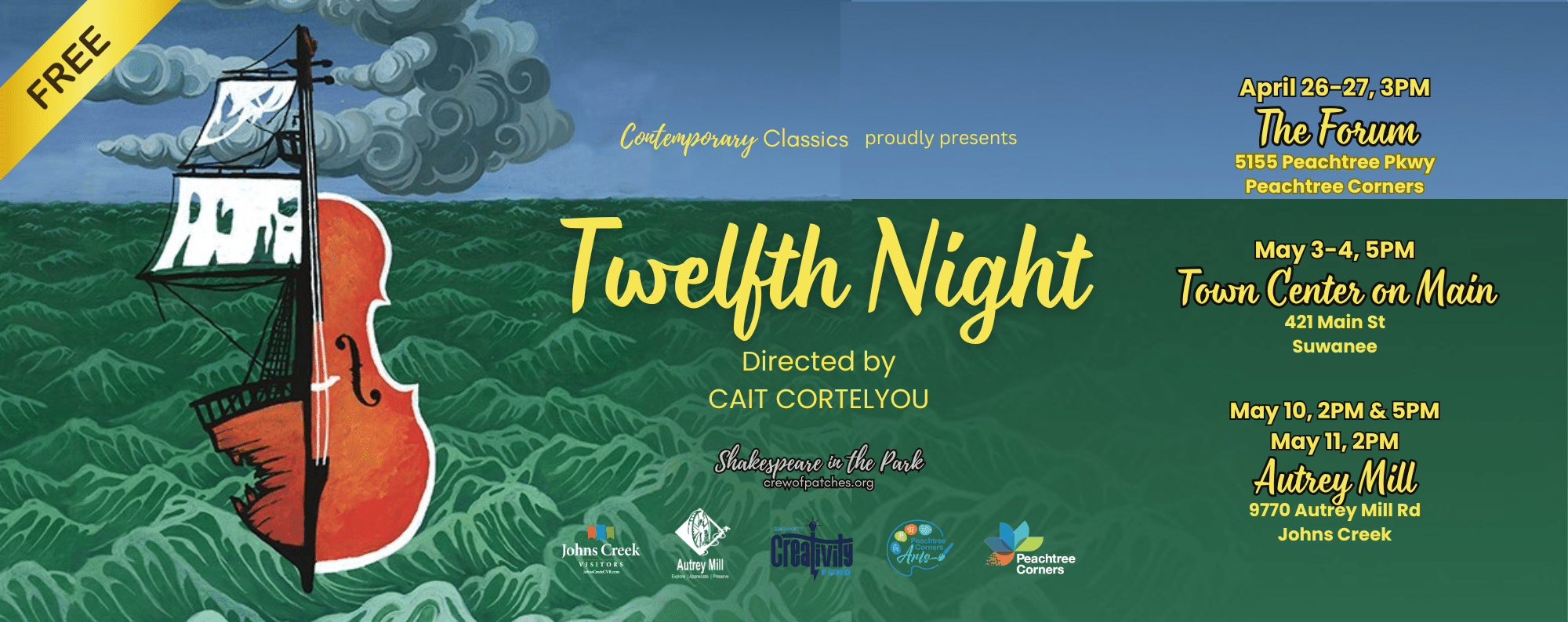
Contemporary Classics Theatre will present Twelfth Night, a free “Shakespeare in the Park” experience at three beautiful outdoor venues in north metro Atlanta
Twelfth Night, William Shakespeare’s romantic comedy of mistaken identity, will play at three beautiful outdoor venues in north metro Atlanta from April 26 to May 11.
Directed by Cait Cortelyou, known for her award-winning feature film “Ask for Jane,” Twelfth Night is a rollicking ensemble comedy explores unrequited love, misperceptions and the instability of gender.
Set in the coastal town of Illyria, young Viola survives a shipwreck and finds herself alone, believing that her twin brother died at sea. Disguising herself as a man, she finds work with the Duke Orsino, quickly falling in love with him. Orsino, however, is in love with the Countess Olivia… and Olivia quickly falls for Viola.
Meanwhile, Olivia’s steward Malvolia has bullied the household for the last time — and the staff is out for vengeance.
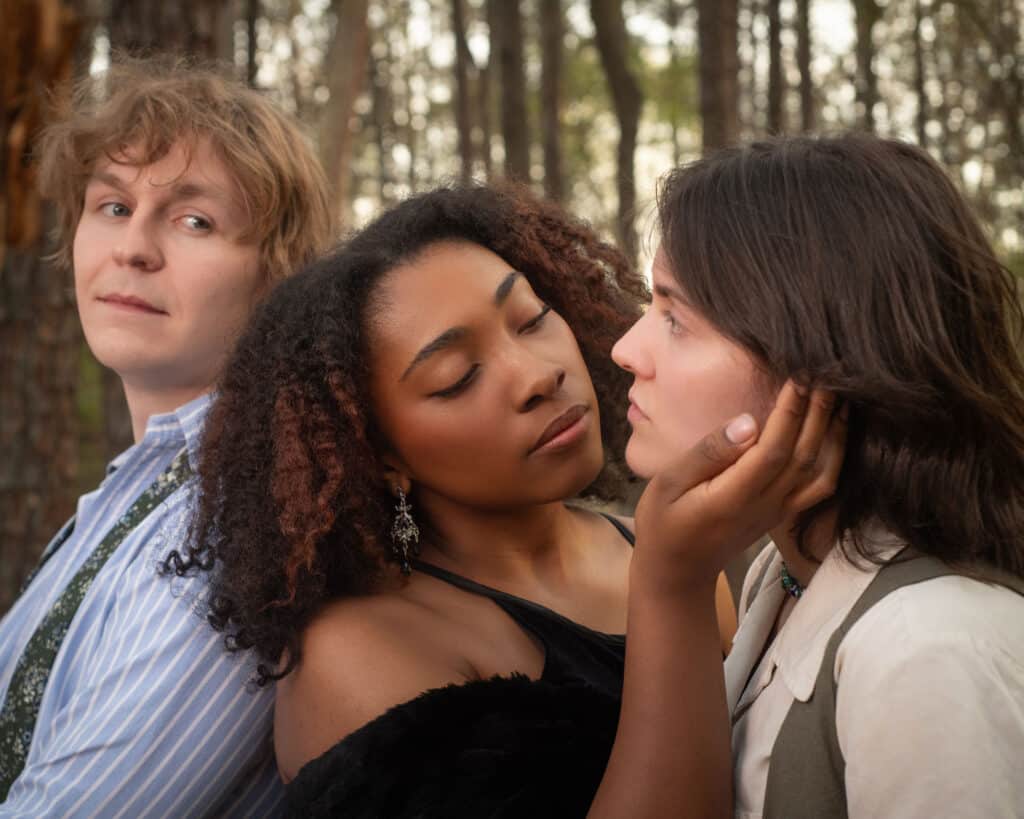
This timeless production of Twelfth Night features Allen Cox, Carl Fisk, Ryan Hutchins, Shem Louis, Susanna Lyne, Steven Medina, Matt Metzger, Danielle Montgomery, Macros Nora, TJ Sanson and Elliott Posadni as one of the first transgender actors to play Viola.
It also features costumes by artist Jordan Hermitt and production design by Sage Kim Gray.
Locations, dates and showtimes
The Plaza at The Forum Peachtree Corners • April 26–27 at 3 p.m.
Audience seating and a special musical performance will start at 2:30 p.m. Please note that seating is limited; arrive early and/or bring lawn chairs or blankets. Food and drink are available for purchase at the venue.
Town Center on Main, Suwanee • May 3– 4 at 5 p.m.
Audience seating and a special musical performance will start at 4:30 p.m. Please note that no seating is provided; bring lawn chairs and blankets. Coolers are welcome (no alcohol). Food trucks will be onsite at the venue.
Autrey Mill Nature Center, Johns Creek • May 10 at 2pm & 5 p.m.; May 11 at 2 p.m.
Audience seating and a special musical performance will start at 1:30 p.m. on both days and at 4:30 p.m. for the evening show on May 10. Limited bench seating only. In case of inclement weather, the show will move from the amphitheatre to the open-air Pole Barn nearby.
Admission to the shows is FREE. Register online for tickets.
About Contemporary Classics
Contemporary Classics exists to challenge and transform classic Western theater traditions by creating an inclusive community of diverse people, ideas and cultures. They believe that classic work is made even greater when performed by a larger variety of artists — especially those who have been marginalized by Wester theatre traditions — including women and people of color.
With no permanent home, the theatre company partners with places such as public parks for performance spaces. This “homeless” state is one of the reasons they call ourselves “a crew of patches”— they travel from “patch” to “patch” with their shows.
The name also comes from a line in A Midsummer Night’s Dream, and reflects the “motley” coat of a Shakespearean clown (or fool), created by sewing patches of old or discarded clothing together in a mishmash of textures and colors, like a patchwork quilt.
Fools, or “Patches,” transcend societal norms by being simultaneously a part of society and outside of it, giving them the ability to examine and comment on it.
For more information, visit crewofpatches.org.
Related
Arts & Literature
From Food Creations to Handmade Jewelry: Wesleyan Kids Prep for Artist Market 2025 [Podcast]
Published
1 month agoon
April 7, 2025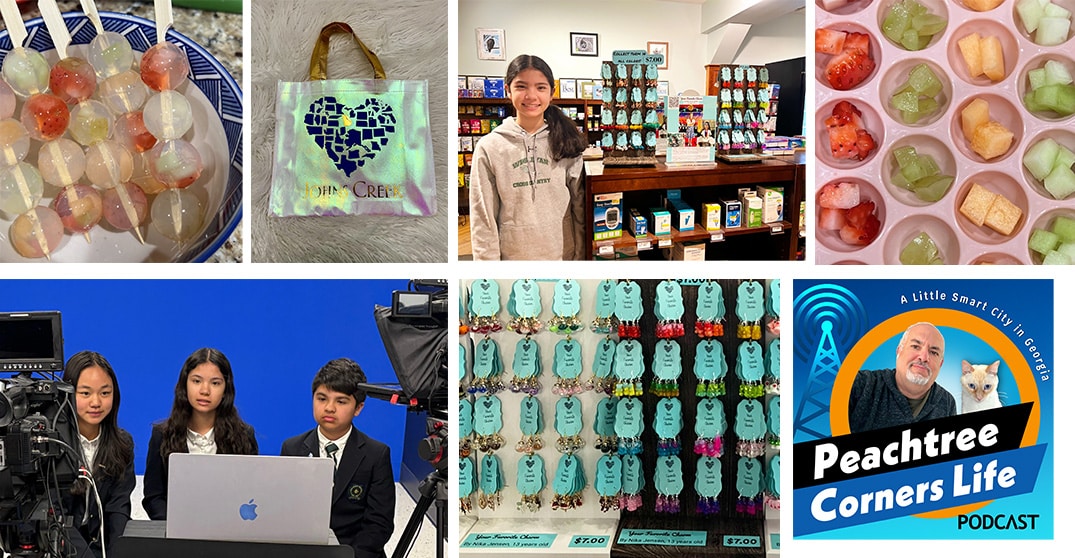
In this episode of Peachtree Corners Life, host Rico Figliolini spotlights three remarkable student artists featured in this year’s Wesleyan Artist Market. Eighth graders Kimberly Wang and Nika Jensen, along with sixth grader Carter Jensen, share their creative journeys—ranging from edible art like fruit jellies and peppermint bark to handmade jewelry and custom-designed bags.
Kimberly talks about her love for food art and balancing sweetness with fruity freshness, while Nika and Carter discuss building a jewelry business that also gives back—donating proceeds to families in the Philippines. This isn’t just an artist market; it’s a showcase of purpose-driven, globally inspired young talent. The event runs April 25–26 at Wesleyan School and is open to the public.
Podcast Takeaways:
- Kimberly Wang creates handmade edible treats, balancing flavor and freshness for the show.
- Nika and Carter Jensen co-run a jewelry and fashion accessory business, inspired by global travel and cultural experiences.
- Nika donates part of her proceeds to support families in the Philippines.
- All three students are deeply involved in extracurriculars—from musicals, marching band, math club, and academic bowl.
- The Wesleyan Artist Market features 24 student artists and over 70 professionals—open to the public April 25–26.









Timestamp:
00:02:19 – Student intros and extracurriculars
00:03:06 – First-time participants and motivations for joining
00:04:13 – Kimberly’s edible art and recipe testing process
00:05:16 – Nika and Carter’s jewelry and bag design business
00:07:06 – The reward of watching people enjoy your creations
00:08:20 – Donating art profits to support families in the Philippines
00:10:39 – Future aspirations in medicine and law, with art as a passion
00:12:06 – Behind-the-scenes logistics of preparing for the market
00:13:25 – Global travel inspiration: 73 countries and counting
00:17:19 – Where the students draw artistic inspiration
00:20:04 – Custom requests: From peppermint bark to Lego earrings
00:21:16 – Anticipation and excitement for this year’s market
00:22:29 – Reflections on Wesleyan and the artist experience
Transcript:
00:00:01 – Rico Figliolini
Hey, everyone. This is Rico Figliolini, host of Peachtree Corners Life. We have a great set of guests today. Because of the upcoming Wesleyan Artist Market, we thought we’d do some interviews with student artists. Three of the 24 that are going to be at Wesleyan Artist Market. So they’re with me here today. So we’re going to get right into that shortly. I just want to say thank you to our corporate sponsors. So I want to say thank you to EV Remodeling, Inc., based here in Peachtree Corners. The owner is Eli. Him and his family live here. They’re great. They do a lot of design work, design your space. Essentially, any home remodeling you need from whether it’s your kitchen, your bathroom, or a whole house remodel, or even an addition to your home, think about it, whatever you need, Eli can handle. So check them out. Go to evremodelinginc.com and find out how they can design your space and your life. Our next sponsor just came on, and they’re Vox Pop Uli. I want to thank them for joining us as well. They deal with all sorts of things you can imagine putting your logo on, similar to a little bit about what these kids do, right? They’re creating artwork. They’re creating a brand for themselves. And so this is what Vox Pop Uli does, right? They’ll take your brand and bring it to life. Essentially, anything that you can think of that would go on apparel, whether it’s sweaters or T-shirts or wherever you want to put your brand engraving, your logo, what object you want to put it on, even vehicle wraps. So if you’ve got a truck, you want to put a whole wrap around it, check them out because they can do that. They’re here in Peachtree Corners and they’re called Vox Pop Uli. So visit their website. I’ll have the links in the show notes as well. So thank you guys. I appreciate your support. So now let’s get right into it. Let me introduce our three artists, great Wesleyan students. Can’t wait to start talking to them. We have Kimberly Wang first on your left, on my left, and Nika and her brother Carter Jensen, who work together creating the artwork they do. So I’m going to ask you guys just to, you know, give me a little background. Tell me who you are, your grade, what you do, extracurricular, stuff like that. This way our audience can get to know a little bit more about you. So let’s start with Kimberly Wang. Hey, Kimberly.
00:02:19 – Kimberly Wang
My name is Kimberly Wang. I’m in eighth grade this year, and outside of Artist Market, I do marching band, and I also do the musical production this year, which is Matilda.
00:02:31 – Rico Figliolini
Excellent. What about Nika? How about you?
00:02:34 – Nika Jensen
I’m also in eighth grade. My name is Nika Jensen, and apart from doing the Artist Market, I do cross country. I’m also in Matilda this year, and I also do math counts, which is a math club.
00:02:47 – Rico Figliolini
Okay, cool. And Carter?
00:02:49 – Carter Jensen
Hello, my name is Carter Jensen. I’m in the sixth grade. And outside of the artist market, I do academic pool and I also do basketball.
00:03:00 – Rico Figliolini
Excellent. Alright, cool. So have you guys ever done the artist market before? Is this the first time?
00:03:06 – Kimberly Wang
This is my second year doing it this year.
00:03:08 – Rico Figliolini
Second?
00:03:10 – Nika Jensen
Yeah, this is our first year because we’re new students this year.
00:03:13 – Rico Figliolini
Alright, cool. What inspired you to get into it, Nika?
00:03:17 – Kimberly Wang
Well, I had my own business before we came to Wesleyan and so I thought that the artist market is a good way to like show my business to other people in our community. So yeah.
00:03:30 – Rico Figliolini
And you brought in your brother Carter to help you with?
00:03:35 – Nika Jensen
Yes, sir. He’s also part of the business.
00:03:39 – Rico Figliolini
Alright cool. Okay so, Kimberly. Food. Food is art, right? I’m sure your mom would probably say, it’s food, just eat it. But you’re playing with your food, essentially. What they used to tell you not to do, right? So when you create your food art, what do you think about? How do you go through this? How do you choose what you do and what do you exactly do?
00:04:13 – Kimberly Wang
So this year, I am making fruit jellies and peppermint bark. And when I think about what creations I want to make for the artist market, I go online and I look through like, what are some popular desserts that a lot of people like? And once I like choose my items, then I go through
the recipe and then I do a lot of trial and errors to make sure that like the products are like healthy and they taste well.
00:04:42 – Rico Figliolini
So they have to be edible, right? Because this is edible art?
00:04:45 – Kimberly Wang
Definitely, yes.
00:04:46 – Rico Figliolini
So are you eating a lot of the edible art before you get to what you need?
00:04:50 – Kimberly Wang
Not really. I don’t usually taste a lot of the food. I let my family taste it.
00:04:56 – Rico Figliolini
Ah, good. I like that. Yes. Get them to participate. Cool. So edible art, that’s one way of doing it. Jewelry, that’s something else, right? Wearable. How do you guys, Nika, Carter, how do you get to the place of what you do?
00:05:16 – Nika Jensen
So I started my business when I was 11 years old and it started like I got my first jewelry making kit and I kind of just expanded from there. So like I usually use Amazon to search and find like the prettiest designs like of earrings and pendants and get opinions from other people like my mom and my family to see like if they think it’s like wearable and if they like it. So I browse on Amazon for a while and I find like the best and high quality products and then I hand make them at home usually like every day after I come home from school so and my brother he does something else and he can tell you about that.
00:06:01 – Carter Jensen
I, my sister, she got a Cricut machine for, like, her 12th birthday, I think. And started making these, like, iron-on bags with the Cricut machine and, like, making them based on, like, Georgia and, like, Wesleyan and designing it based on fashion.
00:06:19 – Rico Figliolini
Alright. Cool. So let’s get back to Kimberly. The food that you do. Do you have particular flavors you like? Do you have particular areas that you stay in?
00:06:33 – Kimberly Wang
So this year I’m trying out like something more sweet with chocolate. But last year I definitely went for more of like the fruity side. And I think I like to keep it like a balance. So that way one is not overpowering the other. My personal favorite will probably be fruit because it’s healthy. And I mean, it just tastes good in general.
00:06:56 – Rico Figliolini
Okay. Alright cool. What’s the most rewarding part that you can think of, of making edible art?
00:07:06 – Kimberly Wang
Well, I mean definitely like you said before you get to eat a lot of food. I mean, I did say before that I don’t eat a lot of the creations I make, but sometimes I still do eat it. And so I think it’s also really rewarding to see like people try out your creations and see like their reactions to what they think of it.
00:07:27 – Rico Figliolini
So when, I know I’ve spoken to other artists when they sell their artwork like paintings or stuff like that they get a chance to see it sometimes when the fan that bought it if you will, would send them a picture of where they hung it right? Yours disappears right?
00:07:45 – Kimberly Wang
Yeah, exactly.
00:07:47 – Rico Figliolini
Yeah I guess, there’s no way to, short of doing a selfie with it or taking pictures of it, there’s no there’s no permanency to it so how does that feel?
00:07:57 – Kimberly Wang
I mean well as long as the people enjoy it that’s good. And I mean I think mainly it’s about like the memory that you have of having the food and if you like it then it stays as a good memory for you and if you don’t then I mean you can always try out different things.
00:08:20 – Rico Figliolini
Okay. Nika, Carter, as far as the jewelry goes the, you’ve used it to raise money to support children in the philippines? yes
00:08:29 – Nika Jensen
Yes sir.
00:08:31 – Rico Figliolini
Is that, is that how you started this when you were 11? Is that the reason?
00:08:35 – Kimberly Wang
No, so I was like 11 during the pandemic. So I was always looking for a way to express my creativity. And so that’s how I started my own business. And so I was selling at my uncle’s pharmacy and I was saving up the money to use for like college or for like other events later on in my life. But this last year and a half before this school year, we were living in the Philippines. And so I was really touched by all of the families there. And we even did something similar where we gave out food and canned goods over Christmas to poor families there. So that just
really touched me. And so ever since we got back to America, I’ve been donating part of my profits to other families in the Philippines.
00:09:24 – Rico Figliolini
Carter, did you end up going on that trip as well?
00:09:28 – Carter Jensen
Yeah, I was with her. We stayed there for about a year and a half. We also did schooling there.
00:09:36 – Rico Figliolini
It’s interesting brothers and sisters, I have three kids and you know growing up brothers and sisters always there could be dynamics there. So how do you get along? Do you ever say to your sister, I don’t know about that. You know that might not look as good, that might not sell. Do you give good feedback? I mean how do you praise her or how do you work together?
00:09:58 – Carter Jensen
She’s more of the leader of the business so like I usually just like try to like agree with her and like yeah.
00:10:12 – Rico Figliolini
Alright that’s cool well you need a leader of the pack sometimes right? So Nika the artwork that you do, you know this is part of what you do you’ve mentioned other things you do right? I know you’re young, you all are, you know you’re not old enough to really think well maybe you are to really think what you want to do with your life right? Is art something that you want to keep as part of what you’re doing in your life?
00:10:39 – Nika Jensen
It’s definitely something that’s of great value to me, but I kind of want to pursue the medical field, but art is also really important to me.
00:10:49 – Rico Figliolini
Okay. Sounds good. Same question to Kimberly. What about you? How do you feel about the work you do?
00:10:57 – Kimberly Wang
I definitely enjoy making food, but like Nika said, I was also really interested in the medical field. And so like I’m not really sure if I’m going to continue pursuing this. But I mean it’s definitely brought me a lot of joy while doing food art.
00:11:15 – Rico Figliolini
Okay. Medical field both of you, that’s cool. What about Carter? How about you? 00:11:19 – Carter Jensen
I kind of like, I like doing art it’s one way to like express your creativity as my sister said. But I also kind of, I’m not really sure what I want to do when I grow up, maybe be a lawyer.
00:11:33 – Rico Figliolini
Okay. Well, artwork gives you a chance, right, to play a little bit, to be able to also see how people, like Kimberly, like you said about how when people see your food or taste your food and your food art, if you will, and it gives you a chance to see how people appreciate what you’re doing, I think, right? The challenges of making food art and keeping it fresh and making sure you’re going to deliver it on the right way I guess at the Wesleyan artist market, how do you how do you handle that part of it?
00:12:06 – Kimberly Wang
So for me the night before each day of the selling I would stay up really late and I make all my products so they’re all fresh and they’re all new. Because I want the best for the people that are eating the food because I don’t want anything to go bad overnight and so I make sure that it’s always new products and I make it, yeah.
00:12:32 – Rico Figliolini
We don’t have the same issue with the jewelry that you do, Nika. So that could last forever, right? But putting it together, sourcing the supplies, right, of what you do, the logistics of it, I guess. How do you handle that? Like getting all the materials together? Do you order it all on Amazon?
00:12:52 – Nika Jensen
Yeah, I order like 99% of all of my things from Amazon. And then since I already have the materials shipped to me, then all I have to do is just create them from my house. So it’s easier for me than having to go out and buy supplies at stores.
00:13:11 – Rico Figliolini
Sounds good. What inspires you as far as jewelry goes? I know that you said you look online to see other things and what the trend is. So where do you find most of your trends? Is it just on Amazon or is it social media, other places?
00:13:25 – Nika Jensen
I kind of observe other people and like what they wear and also social media. And I get a lot of inspiration also from like nature and from like my travels. We’ve been to a lot of countries in the past five years, 173 countries.
00:13:44 – Rico Figliolini
How many?
00:13:45 – Nika Jensen
I’m sorry, not 173, 73 countries.
00:13:49 – Rico Figliolini
73 countries?
00:13:50 – Nika Jensen
Yes, sir.
00:13:51 – Rico Figliolini
That you’ve been to in how many years? I can’t even wrap my head around that. How did you even do that? Teleport? I mean, how did you do that? Wow. What is your heritage, if you don’t mind me asking?
00:14:12 – Nika Jensen
I’m half Filipino. My brother and I are half Filipino. And then my father is part Danish and then also American.
00:14:21 – Rico Figliolini
Do you speak any languages?
00:14:23 – Nika Jensen
I speak the language of the Philippines called Tagalog and then English. And I’m learning Spanish.
00:14:30 – Rico Figliolini
Really? Okay. Kimberly, how about you?
00:14:33 – Kimberly Wang
So my mom is Taiwanese and my dad is Chinese. So I speak Chinese, English. I’m learning French and I’m learning Korean.
00:14:43 – Rico Figliolini
Really? Wow. Okay. Speak Mandarin, is it? Okay. My son was learning that for a year and he was, it’s a tough language to learn. But I’m sure being able to travel for example Nika, to be able to see other other countries and inspiration from those countries. What of the 73, 75 countries you visited what would you say the top five would be for that type of inspiration? Can you pick that up?
00:15:16 – Nika Jensen
I think so. I really like Argentina just because it’s so unique and the culture is just so strong there. Like you really feel so immersed just when you like step into the country. I like Italy, not only because of the food, but that’s also where I got a lot of inspiration for my jewelry. Just like the glass in Venice, like the Murano glass, like that’s also a really big inspiration. In Turkey, that’s when I first like found my interest in jewelry because there was, we went to this bead store and there was like thousands of different beads and I got to like choose different charms and like experiment with creating jewelry. So Turkey, Argentina, Italy, and then I have to give it to the
Philippines, obviously, because we lived there for so long. And then that’s hard. What do you think, Carter?
00:16:12 – Carter Jensen
I like India because I really like butter chicken. Also like Italy because I like pizza and pasta.
00:16:27 – Rico Figliolini
Yes, can’t get any better pizza than Italy, that’s for sure.
00:16:30 – Carter Jensen
Yeah, it’s really good there. And I also like Japan because it’s very futuristic and it’s like…
00:16:38 – Rico Figliolini
Is it?
00:16:39 – Carter Jensen
Yeah, it’s like a new environment and it’s like…
00:16:45 – Rico Figliolini
Yeah, cool. I can’t wait I think where, I think we may be heading there in July so that would be fun. I’ve never been so that would be interesting. Cool so with the artwork, with the inspiration, with the journey that you guys have been on, do you think that, are there any artists it’s hard and food maybe unless it’s Gordon Ramsay or something, but do you draw any inspiration? Who do you draw inspiration from for the work for what you do? Let’s start with Kimberly.
00:17:19 – Kimberly Wang
I don’t really have a specific artist that I look up to but I do watch some cooking shows and some like dessert making shows and they always really inspire me so I feel like that’s what really led me into like starting food art. And so I was like, whoa, this is really cool. And so I was like, okay, let me try this. And so now I’m here and then I’m like, this is pretty fun.
00:17:49 – Rico Figliolini
Oh, okay. Carter, I know you’re not the main person doing the artwork, but what do you see when you’re working with your sister? How does that feel working with her, doing the stuff with her, the artwork? Whatever you’re doing with her, how you know what’s that journey feel like for a brother and his sister?
00:18:13 – Carter Jensen
It’s kind of relaxing doing artwork and like peeling off like the stickers on the bags
00:18:26 – Rico Figliolini
Okay, alright, that’s cool. Sister, how do you feel?
00:18:30 – Nika Jensen
Yeah I just enjoy anytime I’m like I get to make jewelry because I feel like it’s such like an important thing to me. And it also like my brother said it’s really relaxing and just like sitting in our home and just like making jewelry it’s like, it’s really fun for me.
00:18:48 – Rico Figliolini
Do you wear? I’m assuming you wear some of the stuff you make?
00:18:51 – Nika Jensen
No actually I don’t have my ears pierced. And so I just like making it and seeing my creations on other people.
00:19:00 – Rico Figliolini
Okay, cool. Kimberly, do you ever decide, I’ve got to make something, I want to eat something, do you ever decide to do that, or is it always just for the art?
00:19:10 – Kimberly Wang
I think mainly just for the art. Because, I mean, I do piano outside of school, and so most of my time is sucked into that. But, I mean, sometimes if I do want to make something, yeah, I’ll go for it. And I’ll try my best, but it might not be successful.
00:19:31 – Rico Figliolini
Have you ever been, have you ever designed anything custom design? Because someone requested it from you? Like has anyone ever asked Kimberly, has any anyone ever asked yeah can you make that for me? Like aside from the artwork you sell.
00:19:50 – Kimberly Wang
I don’t think so. I did get one request by a high schooler to make peppermint bark for him for his art and science class. But like other than that, no.
00:20:00 – Rico Figliolini
Okay. How about Nika? Have you ever had a request for jewelry?
00:20:04 – Nika Jensen
Yes, I have. So my mom was posting some of my creations on social media and someone reached out to me and she wanted lego earrings like so little like lego figurines as earrings. So I used some of my own legos and then we also bought some but I drilled a hole on top of their head and I had to stick a screw inside. I had to mail it to them. And then they sent me a picture of them wearing it.
00:20:42 – Rico Figliolini
It’s just the way you were describing it, drilling the hole in the head. It’s like, all right, well, that’s good. So there’s the art. You do anything for art, I guess. That’s good. Great. We’ve been showcasing and talking a lot about art here and food and stuff. What are you looking forward to this year’s Wesleyan Artist Market? What is it that’s looking forward? I mean, you have there’s
three of you out of 24 other students. Have you seen or talked to other students and what they’re doing for the show, for the market? What are you looking forward to?
00:21:16 – Nika Jensen
To me?
00:21:17 – Rico Figliolini
Yeah, sure. Let’s go with it.
00:21:18 – Nika Jensen
Okay. Yes. Kimberly and I are actually really good friends so we’ve been like talking with our other friends that are doing the artist market and we’re like you know what they’re selling and yeah. I’m just really excited because we’ve never my brother and I have never done something like this before so I think it’ll be a really good opportunity and it’ll be fun so.
00:21:39 – Rico Figliolini
Something wholly new. That’s good, a good experience. How about you Kimberly?
00:21:45 – Kimberly Wang
Ever since last year, I was really astonished by everything I saw, even if it was like the adult artists, but like the student artists, they were all so talented. I know like a few other people are making food art and people like Nika are making jewelry. And so I’m honestly really inspired and just really blown away by all the effort that everyone puts in.
00:22:13 – Rico Figliolini
Cool. Anything that I’ve not touched on, guys, that you want to share about, individually about what it takes to do what you’re doing or your experience at Wesleyan? Why don’t we start with Kimberly?
00:22:29 – Kimberly Wang
I don’t really have much. I feel like this was a really nice opportunity to be able to share what Wesleyan Artist Market is about and how students have been able to participate in it.
00:22:42 – Rico Figliolini
Cool. Nika?
00:22:43 – Nika Jensen
Yeah so my mom printed out pictures of our time in the philippines so this first one it’s all the bags of food that my old school donated to families in the philippines.
00:23:01 – Rico Figliolini
Excellent. Glad you printed those out.
00:23:03 – Nika Jensen
This is my old class. This was this year when I sent my profits back to the Philippines. And those are all the boxes of food and clothes that they get with that money.
00:23:16 – Rico Figliolini
Wow, you really did make a lot of money.
00:23:18 – Nika Jensen
Yes, sir.
00:23:19 – Rico Figliolini
That’s good. That’s great. And maybe at some point I’ll ask Camille on this, getting some pictures from you all of some of the artwork that you’ve done. I’d love to include that when we post the podcast as well. And if you have any social media where you post your artwork on, if it’s public, feel free. We’re going to be sharing this and we’ll be taking you all as well. I think we got everything covered. I mean, you’re all just unbelievable kids. You’re just doing great work. And I’m just like, it’s always great to talk to you, to Wesleyan students, just like, or to students that are motivated, put it that way, to do things. So glad to see that you’re doing all sorts of things and I still can’t wrap my head around 75 countries, I’m just still trying to think that just like in five years, I can’t even see doing that. But I want to thank you all for for joining me so this is Wesleyan Artist Market you all will be at and that’s April Friday the 25th from 10:00 – 7:00 pm and Saturday April 26 from 10:00 to 3:00 pm. We’ve been talking with Kimberly Wang, who does food art, edible food art, and Nika and her brother Carter Jensen, who do jewelry. Appreciate you guys being with me and being so talkative and just being good guests. So thank you all. Hang in there with me for a second. Everyone else, I want to say thank you again for joining us. You can find out more about Wesleyan Artist Market from just going to wesleyanschool.org or just Googling Wesleyan Artist Market it’ll pop up for you. And it’s open to the public, Friday and Saturday in April. So check them out. Visit the 24 students that are displaying their artwork as well, along with the over, I think it’s over 70 professional artists there. And thank you all from, I guess you’re in Wesleyan Wolf TV station too. So appreciate you doing that with me. So thank you everyone. Stay well.
Related
Arts & Literature
Perimeter Ballet Celebrates 30 Years of Dance and Inspiration
Published
2 months agoon
March 14, 2025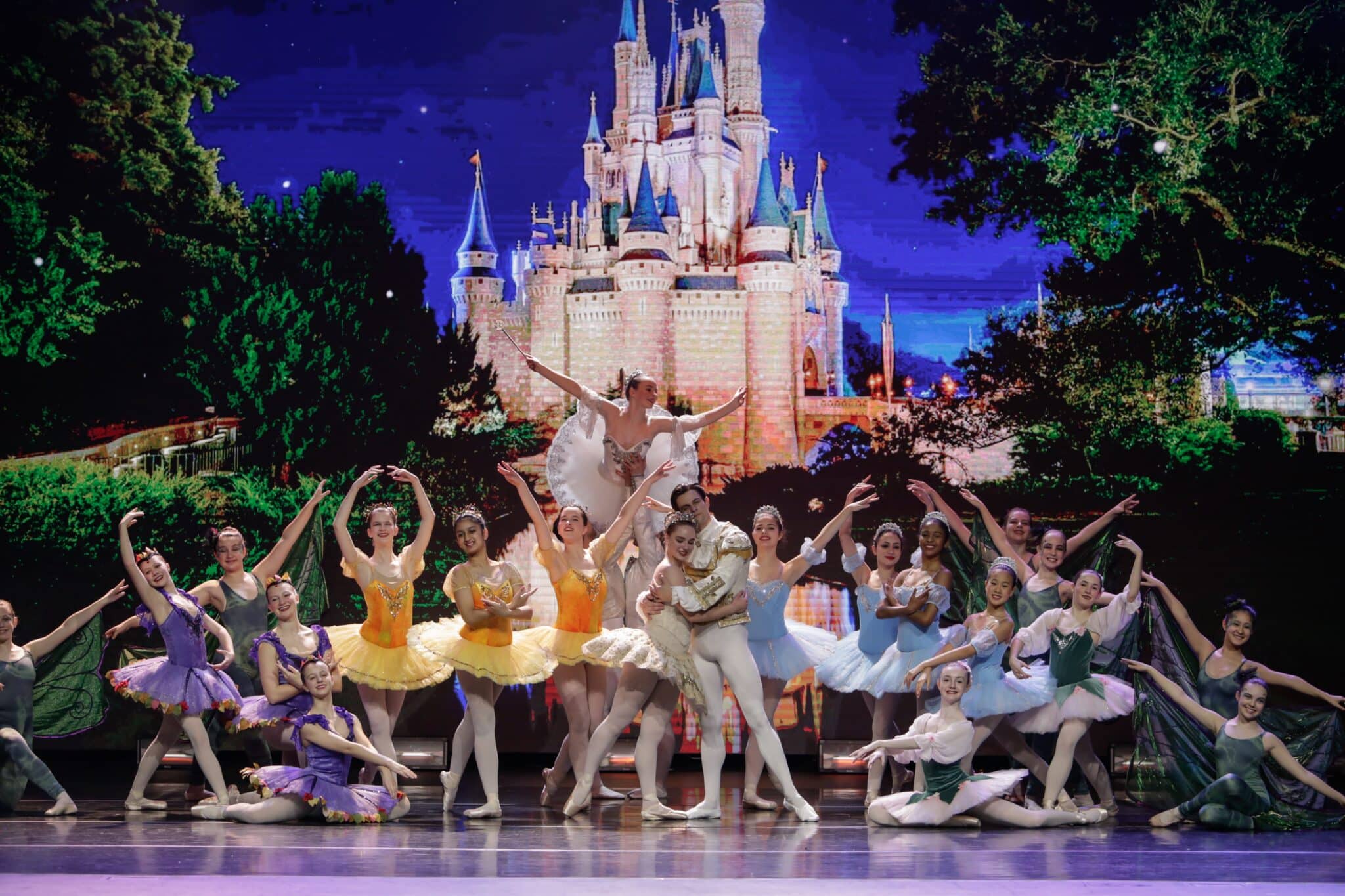
Perimeter Ballet celebrates its 30th anniversary this year. Founded in September 1995, the faith-based ballet school in Johns Creek has long been an integral part of the local arts scene and the community.
What began as a bare-bones program held in the sanctuary of Perimeter Church — on carpeted concrete floors, using the backs of chairs for barres — has grown into a respected school of more than 200 students. Ranging in age from five to 18, the young dancers at Perimeter Ballet are not only committed to the study of dance but also to using their gifts to share their faith.
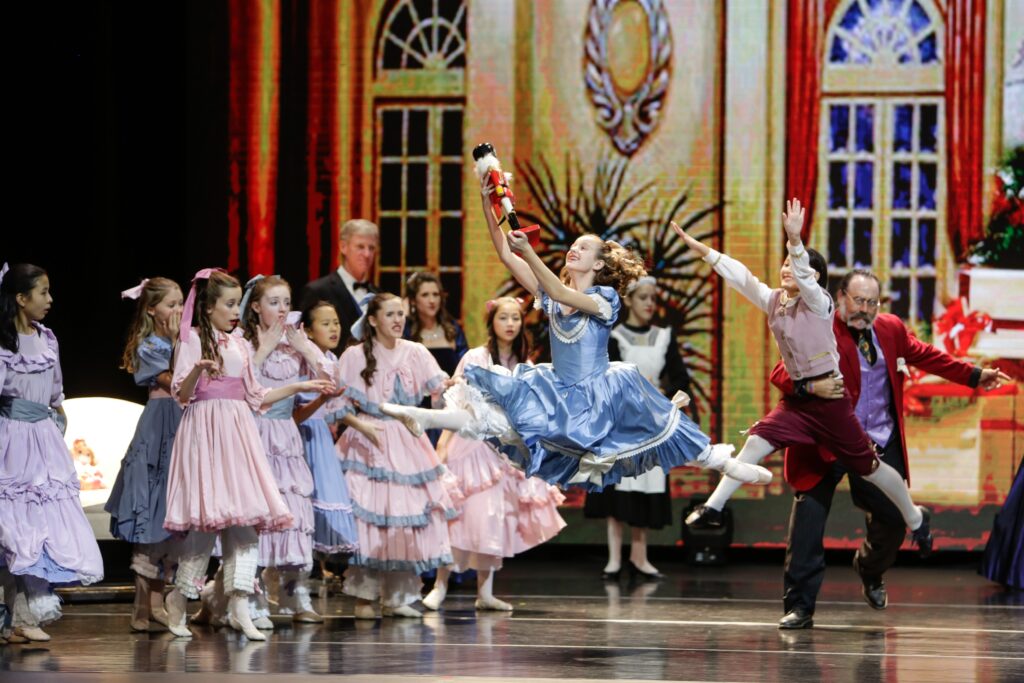
According to the program’s website, their purpose is to “emphasize character along with technique … to counter the natural tendency towards self-absorption in the ballet studio.”
They are “very committed to teaching children to dance — to develop discipline, technique and musicality. [But] the Christian instructors [also] train the students in a context that understands that there’s a reason to dance.”
30 years of dance and faith
Current director, Becky Brown, has led the school for several years, growing the program while faithfully following Perimeter Ballet’s original mission. She oversees weekly classes, summer dance camps and annual productions, including an acclaimed Spring Recital and a presentation of The Nutcracker each December.
For the 30th anniversary, Brown is excited to continue the creative work of the ballet school and share their artistry and message with a larger audience.
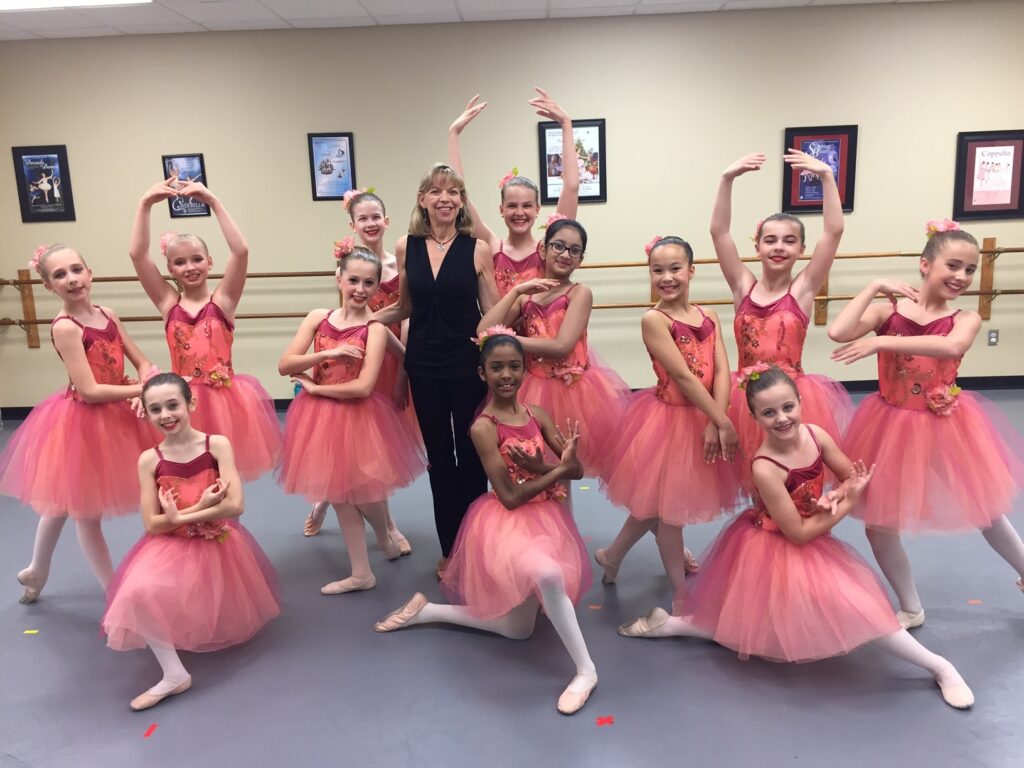
“This year will certainly be a special time for us as we celebrate and look back on 30 wonderful years of Perimeter Ballet and 20 years for our performing company, For His Glory,” she said. “We will be performing the Nutcracker December 11–13 and will have some beautiful new costumes to commemorate the occasion. We look forward to seeing many of our alumni and their families at the performance.”
Classes and instructors
Open to the community at large, weekly classes at Perimeter Ballet range from Creative Movement, PreBallet and grade-level classes for preschoolers through third grade to more advanced classes (two or more times per week) for older students.
Summer camp sessions as well as intermediate level and advanced level intensives are also offered. For the upper-level intensives, students work on their ballet technique but also branch out into jazz and other forms of dance.
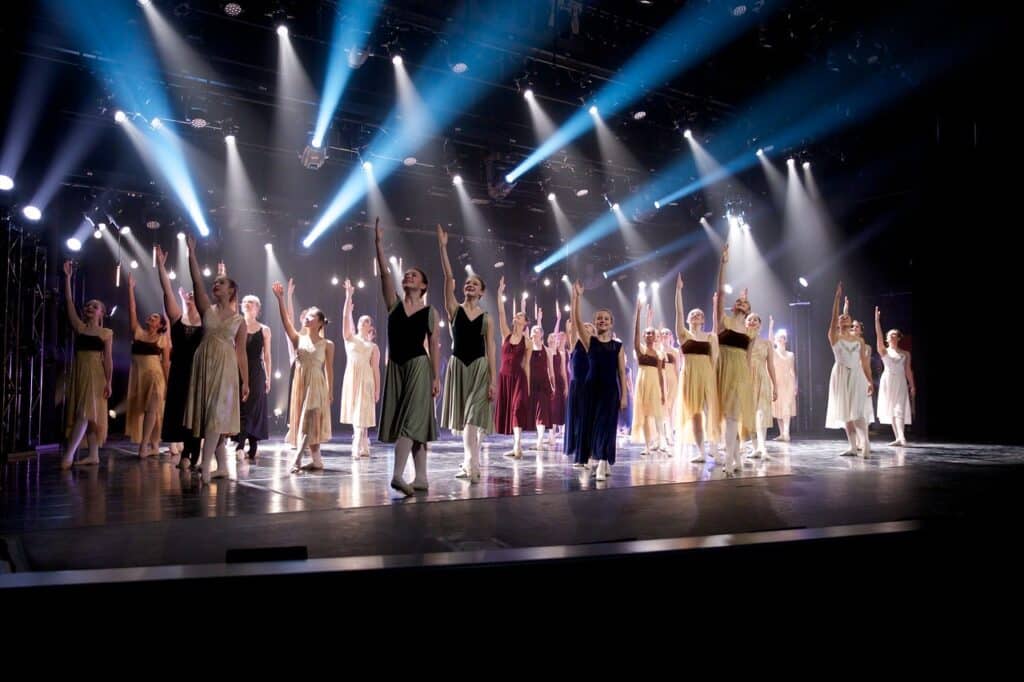
The school’s nine teachers are skilled not just as instructors but as performers themselves, having years of experience dancing with companies such as Ballet Southeast, Atlanta Ballet, North Atlanta Dance Academy and the Metropolitan Opera Ballet. They bring that experience and their Christian faith to all of their classes and interactions with the young students.
For His Glory
In addition to the work they do as a ballet school, Perimeter Ballet also has an audition-selected performance company — For His Glory.
With three levels, made up of dedicated students striving to advance their skills and reach their “God-given potential while giving glory to [their] Lord and Savior, Jesus Christ,” the program presents several high-quality productions throughout the year.
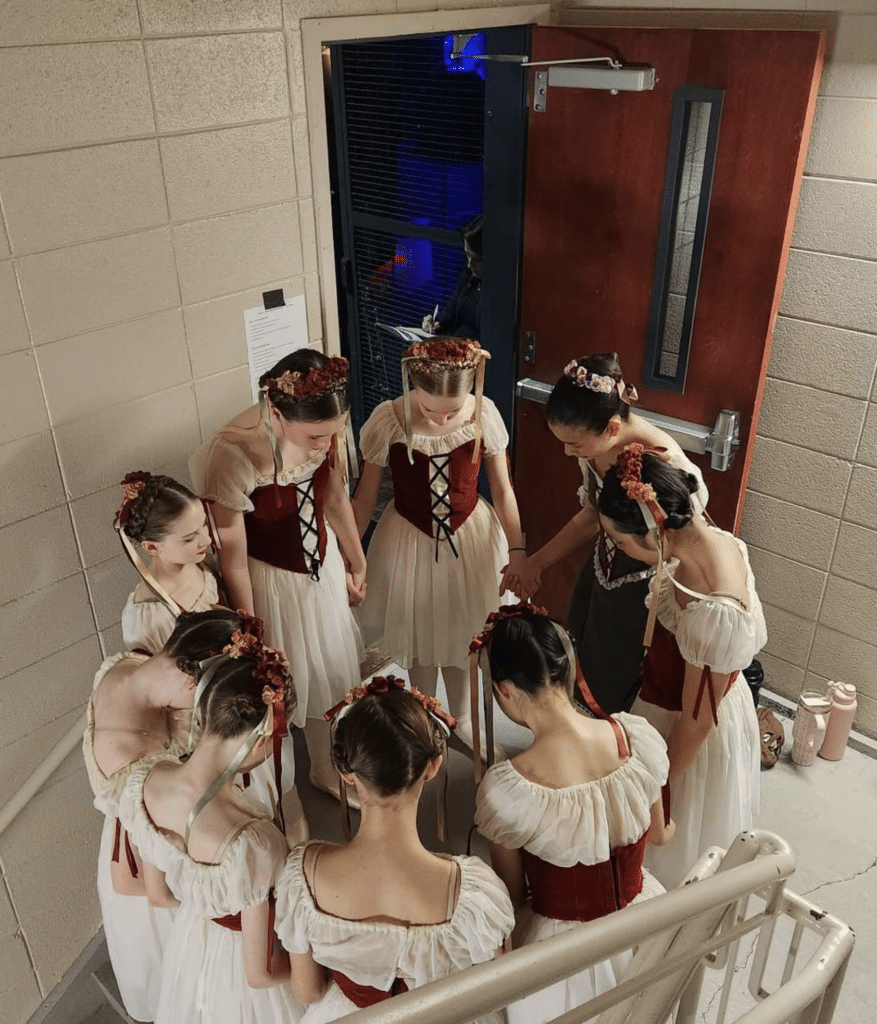
As Perimeter Ballet shares on their website: “Dancers are trained in the ballet classics as well as contemporary forms of dance, which are used in performances, worship settings and outreach. Classical ballets … in the group’s repertoire include Cinderella, Sleeping Beauty, Coppélia, excerpts from Four Seasons and La Fille Mal Gardee. In addition to Christmas and other outreach programs, For His Glory has danced internationally in London, India and Belarus.”
The group most recently performed Beauty & the Beast for two successful shows on stage at the Perimeter Church Sanctuary in early February of this year.
Impact and inspiration
All of this — the focus on faith and commitment to dance, the classes, intensives and stunning productions — have been a decades-long inspiration to the community and especially the student dancers who take part.
Many of the students stay with Perimeter Ballet for much of their childhood, learning and growing in dance as well as in their faith from elementary age through high school. That kind of involvement can clearly impact every aspect of their lives, from discipline learned to how they choose to interact with and be in the world.
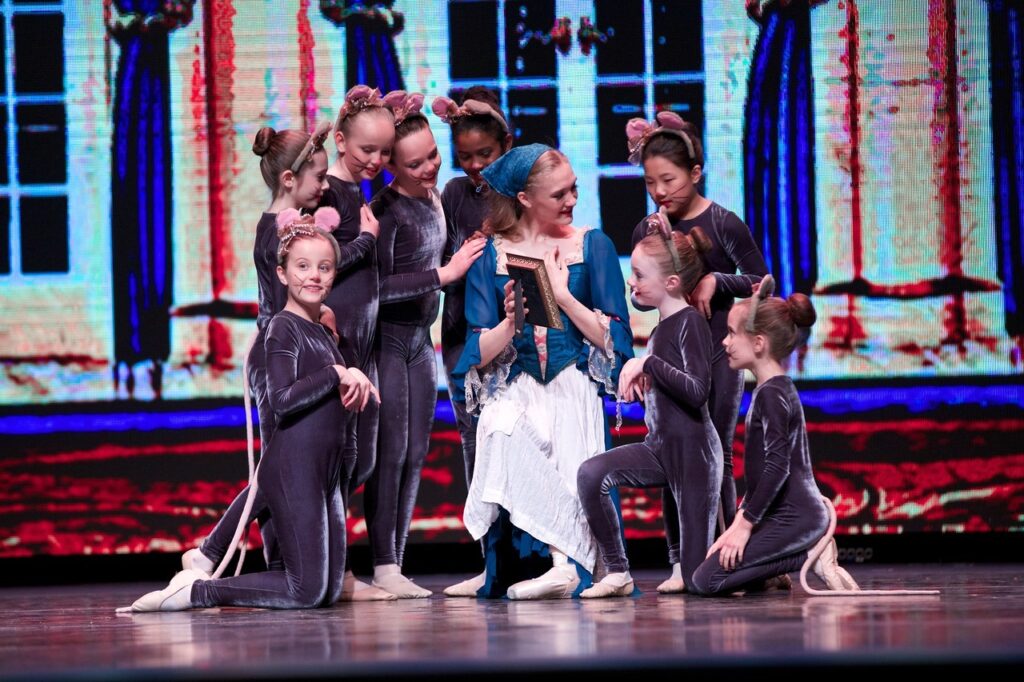
One student, Anne Bradley Maxwell has been taking ballet with the Perimeter program since she was three years old. Now a high school junior in Peachtree Corners, she’s reflected on her time at the school and in the performance company as well as Perimeter Ballet’s milestone anniversary.
“For fifteen years … I matured within this unique, local community arts program,” she shared. “This year marks the 30th anniversary of its founding … and I’m honored to say I’ve been a student for half of that era. The talented instructors in [the] program not only helped advance me into an accomplished ballerina but also into a more faithful servant of Jesus Christ using dance as a form of worship.”
A lifelong journey
“This lifelong journey included annual seasonal training, auditions, numerous external summer intensives and wonderful performances on stages across the nation and abroad, for audiences ranging from a few dozen to several thousand,” Maxwell continued.
“… Taking ballet has instilled in me a deep understanding of perseverance and resilience. Pursuing excellence in ballet required me to overcome physical and emotional challenges … I learned to seek out solutions — whether physical therapy for healing my body or prayer and reflection to rejuvenate my spirit. These experiences have strengthened my ability to face setbacks, adapt and emerge stronger.
Ballet has cultivated in me a unique combination of athleticism, discipline and creative imagination. The most elegant performances emerge from the interplay of technical mastery and creative expression. The collaborative nature of ballet, where individuals work in harmony to create something greater than themselves, informs my approach to teamwork and innovation, both in the classroom and community.”
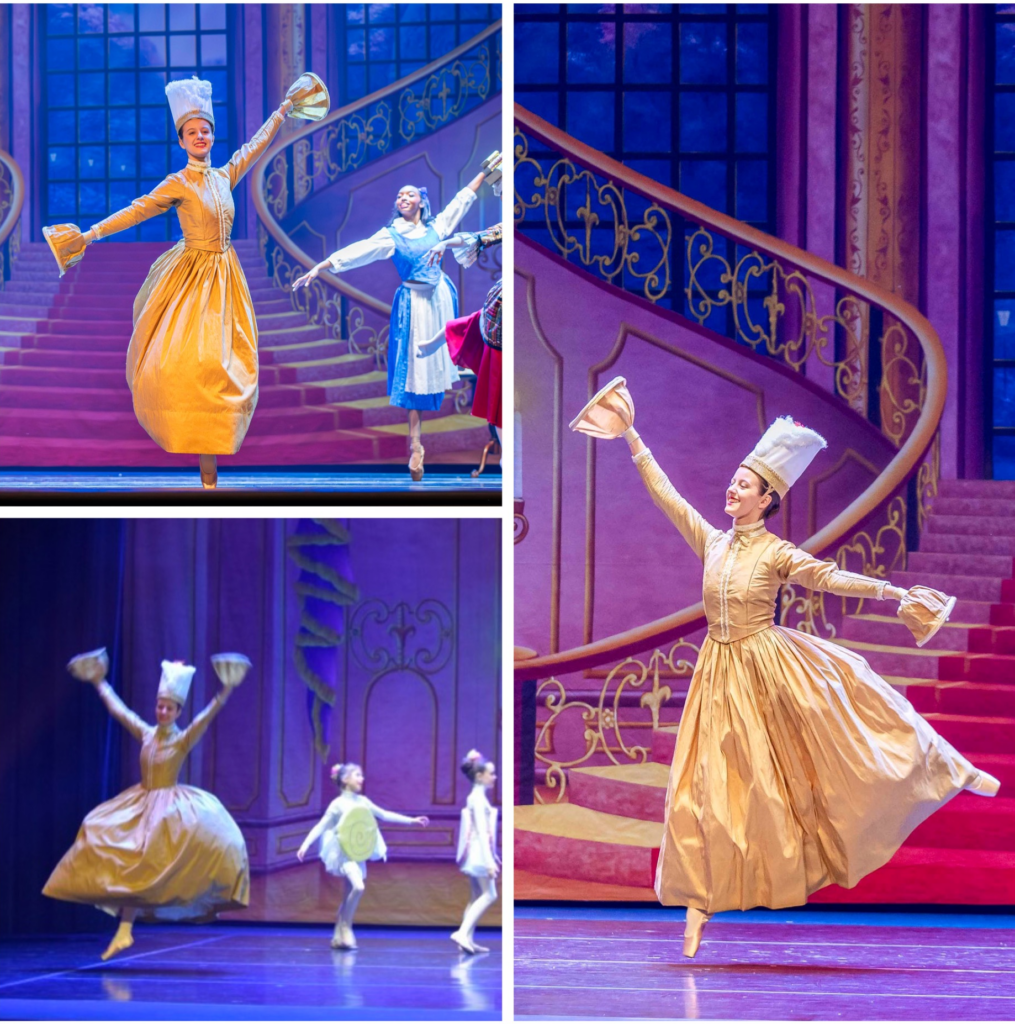
“… Ballet has [also] given me the gift of joy — both in experiencing it personally as a testament to Christ’s goodness and in sharing it with audiences. This joy, while intangible, is a powerful force that I hope to bring into my next chapters following high school. Whether through teaching movement, choreographing performances or exploring ways to expand ballet offerings, I aspire to enrich the community with the beauty and joy of dance.
… My time at Perimeter Ballet has equipped me with perseverance, discipline, creativity and a passion for sharing joy — qualities that I am excited to further cultivate as a young adult. These will not only enhance my personal journey but also contribute meaningfully to the rich tapestry of life. As I enter my senior year later this fall, I am full of gratitude for the solid foundation of technique and creative expression honoring God as the giver of my talent.”
Upcoming events
Perimeter Ballet’s Annual Spring Recital will be held in the Perimeter Church Sanctuary on Thursday, May 1 and Friday, May 2 from 7 p.m. to 8:15 p.m.
Summer camp sessions are scheduled for June and July. Registration will open on April 15.
2025-2026 classes will start in August with registration opening on April 15.
With help from Anne Bradley, the school is also planning a fundraiser event later in the year to mark the 30th anniversary.
For more information, visit perimeterballet.com.
Related
Read the Digital Edition
Subscribe
Keep Up With Peachtree Corners News
Join our mailing list to receive the latest news and updates from our team.
You have Successfully Subscribed!

GA Tech Launches First-of-its-Kind GT Atrium in Peachtree Corners

Katherine Lafourcade — A Journey of Passion, Resilience and Giving Back

Digital Edition

PCBA Announces 2025 Scholarship Winner

Paul Duke STEM High School Student Earns CGO Scholarship

World Blood Donor Day Starts Here: Theo’s Miracle, Katherine’s Mission [Podcast]

Executive Function: A Tribute to Working Moms

Peachtree Corners Grows Business Opportunities Through Economic Development

Simpson Elementary Marks Exceptional Children’s Week

Executive Function: A Tribute to Working Moms

Official City Merchandise Line Debuts This Saturday at Town Green

Peachtree Corners Grows Business Opportunities Through Economic Development

Digital Edition

World Blood Donor Day Starts Here: Theo’s Miracle, Katherine’s Mission [Podcast]

Paul Duke STEM High School Student Earns CGO Scholarship

PCBA Announces 2025 Scholarship Winner

Light up the Corners [Video]

Capitalist Sage: Business Leadership in Your Community [Podcast]

Cliff Bramble: A Culinary Adventure through Italy

Top 10 Brunch Places in Gwinnett County

A Hunger for Hospitality

THE CORNERS EPISODE 3 – BLAXICAN PART 1

Top 10 Indoor Things To Do This Winter

The ED Hour: What it takes to Remove Barriers from Education

Peachtree Corners Life
Topics and Categories
Trending
-
Digital Edition4 days ago
Digital Edition
-
Podcast4 days ago
World Blood Donor Day Starts Here: Theo’s Miracle, Katherine’s Mission [Podcast]
-
Community2 days ago
Executive Function: A Tribute to Working Moms
-
Business3 days ago
Peachtree Corners Grows Business Opportunities Through Economic Development





